RBS 2012 Annual Report Download - page 374
Download and view the complete annual report
Please find page 374 of the 2012 RBS annual report below. You can navigate through the pages in the report by either clicking on the pages listed below, or by using the keyword search tool below to find specific information within the annual report.-
 1
1 -
 2
2 -
 3
3 -
 4
4 -
 5
5 -
 6
6 -
 7
7 -
 8
8 -
 9
9 -
 10
10 -
 11
11 -
 12
12 -
 13
13 -
 14
14 -
 15
15 -
 16
16 -
 17
17 -
 18
18 -
 19
19 -
 20
20 -
 21
21 -
 22
22 -
 23
23 -
 24
24 -
 25
25 -
 26
26 -
 27
27 -
 28
28 -
 29
29 -
 30
30 -
 31
31 -
 32
32 -
 33
33 -
 34
34 -
 35
35 -
 36
36 -
 37
37 -
 38
38 -
 39
39 -
 40
40 -
 41
41 -
 42
42 -
 43
43 -
 44
44 -
 45
45 -
 46
46 -
 47
47 -
 48
48 -
 49
49 -
 50
50 -
 51
51 -
 52
52 -
 53
53 -
 54
54 -
 55
55 -
 56
56 -
 57
57 -
 58
58 -
 59
59 -
 60
60 -
 61
61 -
 62
62 -
 63
63 -
 64
64 -
 65
65 -
 66
66 -
 67
67 -
 68
68 -
 69
69 -
 70
70 -
 71
71 -
 72
72 -
 73
73 -
 74
74 -
 75
75 -
 76
76 -
 77
77 -
 78
78 -
 79
79 -
 80
80 -
 81
81 -
 82
82 -
 83
83 -
 84
84 -
 85
85 -
 86
86 -
 87
87 -
 88
88 -
 89
89 -
 90
90 -
 91
91 -
 92
92 -
 93
93 -
 94
94 -
 95
95 -
 96
96 -
 97
97 -
 98
98 -
 99
99 -
 100
100 -
 101
101 -
 102
102 -
 103
103 -
 104
104 -
 105
105 -
 106
106 -
 107
107 -
 108
108 -
 109
109 -
 110
110 -
 111
111 -
 112
112 -
 113
113 -
 114
114 -
 115
115 -
 116
116 -
 117
117 -
 118
118 -
 119
119 -
 120
120 -
 121
121 -
 122
122 -
 123
123 -
 124
124 -
 125
125 -
 126
126 -
 127
127 -
 128
128 -
 129
129 -
 130
130 -
 131
131 -
 132
132 -
 133
133 -
 134
134 -
 135
135 -
 136
136 -
 137
137 -
 138
138 -
 139
139 -
 140
140 -
 141
141 -
 142
142 -
 143
143 -
 144
144 -
 145
145 -
 146
146 -
 147
147 -
 148
148 -
 149
149 -
 150
150 -
 151
151 -
 152
152 -
 153
153 -
 154
154 -
 155
155 -
 156
156 -
 157
157 -
 158
158 -
 159
159 -
 160
160 -
 161
161 -
 162
162 -
 163
163 -
 164
164 -
 165
165 -
 166
166 -
 167
167 -
 168
168 -
 169
169 -
 170
170 -
 171
171 -
 172
172 -
 173
173 -
 174
174 -
 175
175 -
 176
176 -
 177
177 -
 178
178 -
 179
179 -
 180
180 -
 181
181 -
 182
182 -
 183
183 -
 184
184 -
 185
185 -
 186
186 -
 187
187 -
 188
188 -
 189
189 -
 190
190 -
 191
191 -
 192
192 -
 193
193 -
 194
194 -
 195
195 -
 196
196 -
 197
197 -
 198
198 -
 199
199 -
 200
200 -
 201
201 -
 202
202 -
 203
203 -
 204
204 -
 205
205 -
 206
206 -
 207
207 -
 208
208 -
 209
209 -
 210
210 -
 211
211 -
 212
212 -
 213
213 -
 214
214 -
 215
215 -
 216
216 -
 217
217 -
 218
218 -
 219
219 -
 220
220 -
 221
221 -
 222
222 -
 223
223 -
 224
224 -
 225
225 -
 226
226 -
 227
227 -
 228
228 -
 229
229 -
 230
230 -
 231
231 -
 232
232 -
 233
233 -
 234
234 -
 235
235 -
 236
236 -
 237
237 -
 238
238 -
 239
239 -
 240
240 -
 241
241 -
 242
242 -
 243
243 -
 244
244 -
 245
245 -
 246
246 -
 247
247 -
 248
248 -
 249
249 -
 250
250 -
 251
251 -
 252
252 -
 253
253 -
 254
254 -
 255
255 -
 256
256 -
 257
257 -
 258
258 -
 259
259 -
 260
260 -
 261
261 -
 262
262 -
 263
263 -
 264
264 -
 265
265 -
 266
266 -
 267
267 -
 268
268 -
 269
269 -
 270
270 -
 271
271 -
 272
272 -
 273
273 -
 274
274 -
 275
275 -
 276
276 -
 277
277 -
 278
278 -
 279
279 -
 280
280 -
 281
281 -
 282
282 -
 283
283 -
 284
284 -
 285
285 -
 286
286 -
 287
287 -
 288
288 -
 289
289 -
 290
290 -
 291
291 -
 292
292 -
 293
293 -
 294
294 -
 295
295 -
 296
296 -
 297
297 -
 298
298 -
 299
299 -
 300
300 -
 301
301 -
 302
302 -
 303
303 -
 304
304 -
 305
305 -
 306
306 -
 307
307 -
 308
308 -
 309
309 -
 310
310 -
 311
311 -
 312
312 -
 313
313 -
 314
314 -
 315
315 -
 316
316 -
 317
317 -
 318
318 -
 319
319 -
 320
320 -
 321
321 -
 322
322 -
 323
323 -
 324
324 -
 325
325 -
 326
326 -
 327
327 -
 328
328 -
 329
329 -
 330
330 -
 331
331 -
 332
332 -
 333
333 -
 334
334 -
 335
335 -
 336
336 -
 337
337 -
 338
338 -
 339
339 -
 340
340 -
 341
341 -
 342
342 -
 343
343 -
 344
344 -
 345
345 -
 346
346 -
 347
347 -
 348
348 -
 349
349 -
 350
350 -
 351
351 -
 352
352 -
 353
353 -
 354
354 -
 355
355 -
 356
356 -
 357
357 -
 358
358 -
 359
359 -
 360
360 -
 361
361 -
 362
362 -
 363
363 -
 364
364 -
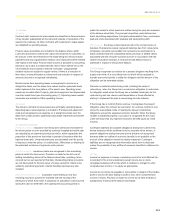 365
365 -
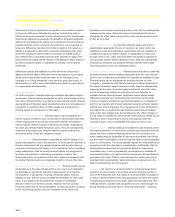 366
366 -
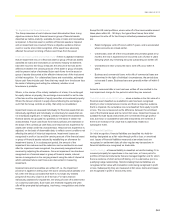 367
367 -
 368
368 -
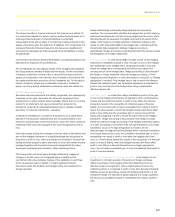 369
369 -
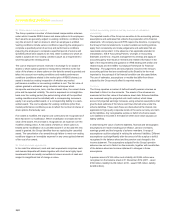 370
370 -
 371
371 -
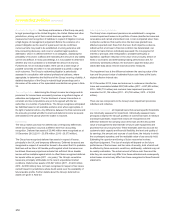 372
372 -
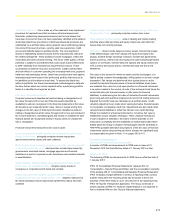 373
373 -
 374
374 -
 375
375 -
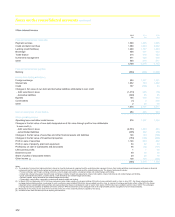 376
376 -
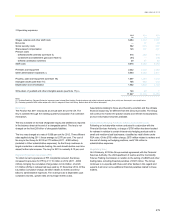 377
377 -
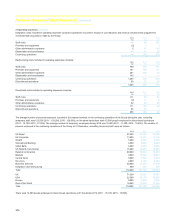 378
378 -
 379
379 -
 380
380 -
 381
381 -
 382
382 -
 383
383 -
 384
384 -
 385
385 -
 386
386 -
 387
387 -
 388
388 -
 389
389 -
 390
390 -
 391
391 -
 392
392 -
 393
393 -
 394
394 -
 395
395 -
 396
396 -
 397
397 -
 398
398 -
 399
399 -
 400
400 -
 401
401 -
 402
402 -
 403
403 -
 404
404 -
 405
405 -
 406
406 -
 407
407 -
 408
408 -
 409
409 -
 410
410 -
 411
411 -
 412
412 -
 413
413 -
 414
414 -
 415
415 -
 416
416 -
 417
417 -
 418
418 -
 419
419 -
 420
420 -
 421
421 -
 422
422 -
 423
423 -
 424
424 -
 425
425 -
 426
426 -
 427
427 -
 428
428 -
 429
429 -
 430
430 -
 431
431 -
 432
432 -
 433
433 -
 434
434 -
 435
435 -
 436
436 -
 437
437 -
 438
438 -
 439
439 -
 440
440 -
 441
441 -
 442
442 -
 443
443 -
 444
444 -
 445
445 -
 446
446 -
 447
447 -
 448
448 -
 449
449 -
 450
450 -
 451
451 -
 452
452 -
 453
453 -
 454
454 -
 455
455 -
 456
456 -
 457
457 -
 458
458 -
 459
459 -
 460
460 -
 461
461 -
 462
462 -
 463
463 -
 464
464 -
 465
465 -
 466
466 -
 467
467 -
 468
468 -
 469
469 -
 470
470 -
 471
471 -
 472
472 -
 473
473 -
 474
474 -
 475
475 -
 476
476 -
 477
477 -
 478
478 -
 479
479 -
 480
480 -
 481
481 -
 482
482 -
 483
483 -
 484
484 -
 485
485 -
 486
486 -
 487
487 -
 488
488 -
 489
489 -
 490
490 -
 491
491 -
 492
492 -
 493
493 -
 494
494 -
 495
495 -
 496
496 -
 497
497 -
 498
498 -
 499
499 -
 500
500 -
 501
501 -
 502
502 -
 503
503 -
 504
504 -
 505
505 -
 506
506 -
 507
507 -
 508
508 -
 509
509 -
 510
510 -
 511
511 -
 512
512 -
 513
513 -
 514
514 -
 515
515 -
 516
516 -
 517
517 -
 518
518 -
 519
519 -
 520
520 -
 521
521 -
 522
522 -
 523
523 -
 524
524 -
 525
525 -
 526
526 -
 527
527 -
 528
528 -
 529
529 -
 530
530 -
 531
531 -
 532
532 -
 533
533 -
 534
534 -
 535
535 -
 536
536 -
 537
537 -
 538
538 -
 539
539 -
 540
540 -
 541
541 -
 542
542 -
 543
543
 |
 |

372
Accounting policies continued
IFRS 11 ‘Joint Arrangements’, which supersedes IAS 31’ Interests in
Joint Ventures’, distinguishes between joint operations and joint ventures.
Joint operations are accounted for by the investor recognising its assets
and liabilities including its share of any assets held and liabilities incurred
jointly and its share of revenues and costs. Joint ventures are accounted
for in the investor’s consolidated accounts using the equity method. IFRS
11 requires retrospective application. Implementation of IFRS 11 will not
have a material effect on the Group’s financial statements.
IFRS 12 ‘Disclosure of Interests in Other Entities’ covers disclosures for
entities reporting under IFRS 10 and IFRS 11 replacing those in IAS 28
and IAS 27. Entities are required to disclose information that helps
financial statement readers evaluate the nature, risks and financial effects
associated with an entity’s interests in subsidiaries, in associates and
joint arrangements and in unconsolidated structured entities.
IAS 27 ‘Separate Financial Statements’ comprises those parts of the
existing IAS 27 that deal with separate financial statements. IAS 28
‘Investments in Associates and Joint Ventures’ covers joint ventures as
well as associates; both must be accounted for using the equity method.
The mechanics of the equity method are unchanged. These two revised
standards will have no material effect on the Group’s financial
statements.
Although IFRS 10-12 (as amended) and revised IAS 27 and IAS 28 have
an effective date of 1 January 2013, they have been endorsed by the EU
for application from 1 January 2014. However, early adoption is permitted
and the Group implemented these standards from 1 January 2013.
IFRS 13 ‘Fair Value Measurement’ sets out a single IFRS framework for
defining and measuring fair value and requiring disclosures about fair
value measurements. Implementation of IFRS 13 will not have a material
effect on the Group’s financial statements.
‘Disclosures - Offsetting Financial Assets and Financial Liabilities
(Amendments to IFRS 7)’ amended IFRS 7 to require disclosures about
the effects and potential effects on an entity’s financial position of
offsetting financial assets and financial liabilities and related
arrangements.
IAS 19 ‘Employee Benefits’ (revised) requires: the immediate recognition
of all actuarial gains and losses eliminating the ‘corridor approach’;
interest cost to be calculated on the net pension liability or asset at the
long-term bond rate, an expected rate of return will no longer be applied
to assets; and all past service costs to be recognised immediately when a
scheme is curtailed or amended. If the Group had adopted IAS 19
revised as at 31 December 2012, profit after tax for the period ended 31
December 2012 would have been lower by £84 million (2011 - £154
million; 2010 - £105 million) and other comprehensive income after tax
higher by the same amounts.
Amendments to IAS 1 ‘Presentation of Items of Other Comprehensive
Income’ require items that will never be recognised in profit or loss to be
presented separately in other comprehensive income from those items
that are subject to subsequent reclassification.
‘Annual Improvements 2009-2011 Cycle’ makes a number of minor
changes to IFRSs. These will not have a material effect on the Group’s
financial statements.
Effective after 2013
In October 2012, the IASB issued ‘Investment Entities (amendments to
IFRS 10, IFRS 12 and IAS 27)’. The amendments apply to ‘investment
entities’: entities whose business is to invest funds solely for returns from
capital appreciation, investment income or both and which evaluate the
performance of their investments on a fair value basis. The amendments
provide an exception to IFRS 10 by requiring investment entities to
measure their subsidiaries (other than those that provide services related
to the entity’s investment activities) at fair value through profit or loss,
rather than consolidate them. The amendments are effective from 1
January 2014.
In December 2011, the IASB issued ’Offsetting Financial Assets and
Financial Liabilities (Amendments to IAS 32)’. The amendments add
application guidance to IAS 32 to address inconsistencies identified in
applying some of the standard’s criteria for offsetting financial assets and
financial liabilities. The amendments are effective for annual periods
beginning on or after 1 January 2014 and must be applied
retrospectively.
The Group is reviewing these amendments to determine their effect on
the Group’s financial reporting.
In November 2009, the IASB issued IFRS 9 ‘Financial Instruments’
simplifying the classification and measurement requirements in IAS 39 in
respect of financial assets. The standard reduces the measurement
categories for financial assets to two: fair value and amortised cost. A
financial asset is classified on the basis of the entity's business model for
managing the financial asset and the contractual cash flow characteristics
of the financial asset. Only assets with contractual terms that give rise to
cash flows on specified dates that are solely payments of principal and
interest on principal and which are held within a business model whose
objective is to hold assets in order to collect contractual cash flows are
classified as amortised cost. All other financial assets are measured at
fair value. Changes in the value of financial assets measured at fair value
are generally taken to profit or loss.
In October 2010, IFRS 9 was updated to include requirements in respect
of the classification and measurement of liabilities. These do not differ
markedly from those in IAS 39 except for the treatment of changes in the
fair value of financial liabilities that are designated as at fair value through
profit or loss attributable to own credit; these must be presented in other
comprehensive income.
In December 2011, the IASB issued amendments to IFRS 9 and to IFRS
7 ‘Financial Instruments: Disclosures’ delaying the effective date of IFRS
9 to annual periods beginning on or after 1 January 2015 and introducing
revised transitional arrangements including additional transition
disclosures. If an entity implements IFRS 9 in 2012 the amendments
permit it either to restate comparative periods or to provide the additional
disclosures. Additional transition disclosures must be given if
implementation takes place after 2012.
IFRS 9 makes major changes to the framework for the classification and
measurement of financial instruments and will have a significant effect on
the Group's financial statements. The Group is assessing the effect of
IFRS 9 which will depend on the results of IASB's reconsideration of
IFRS 9’s classification and measurement requirements and the outcome
of the other phases in the development of IFRS 9.
